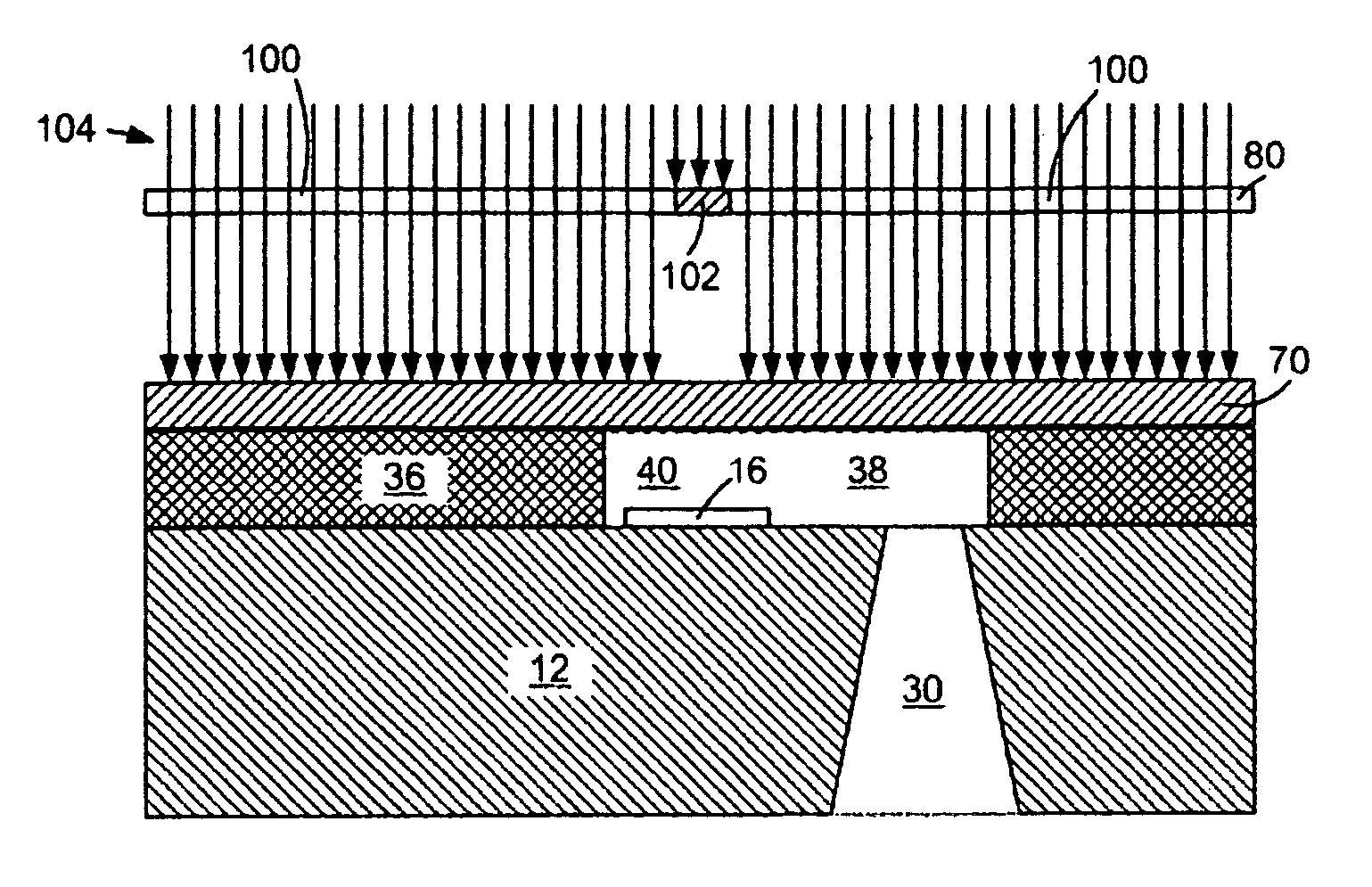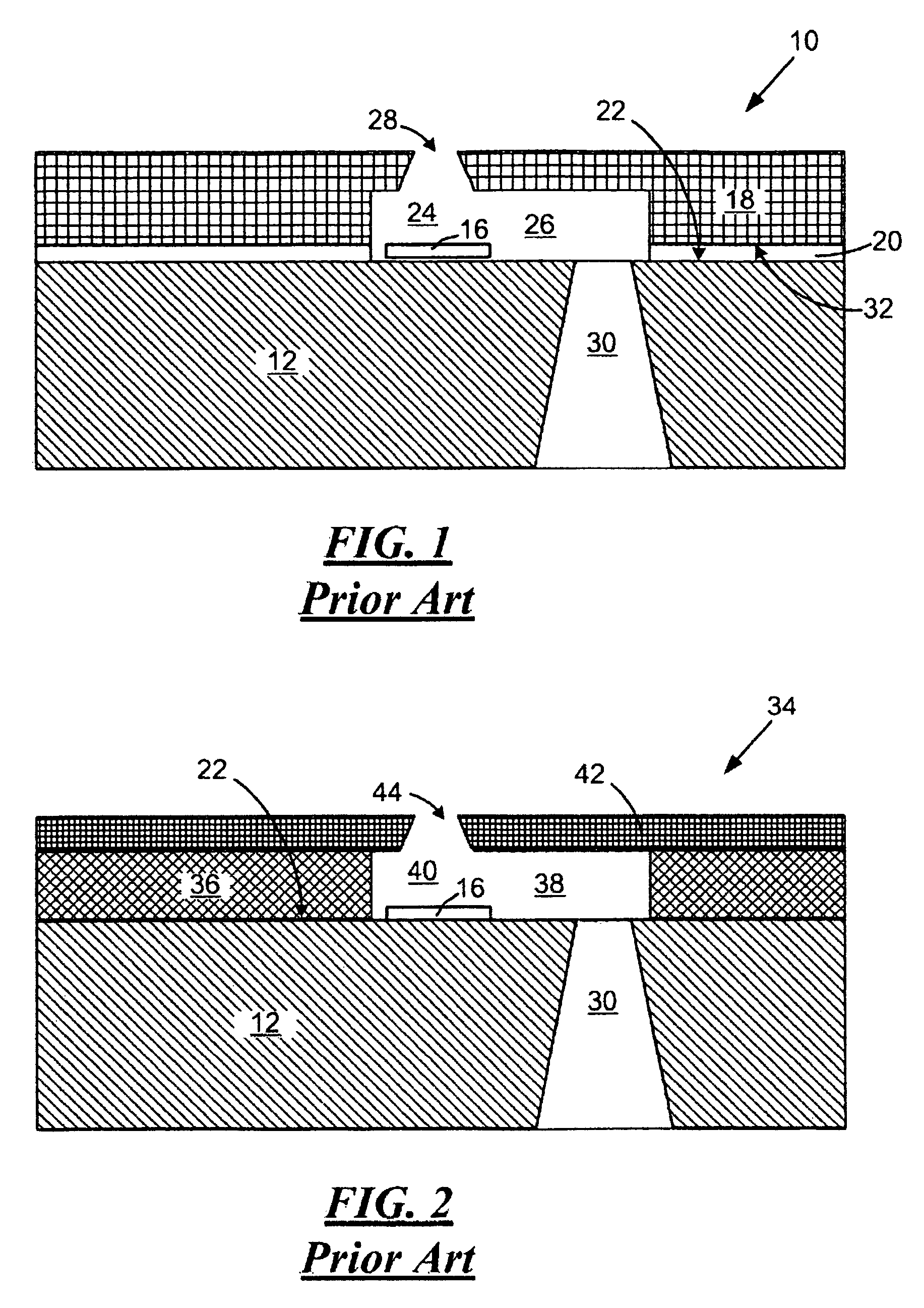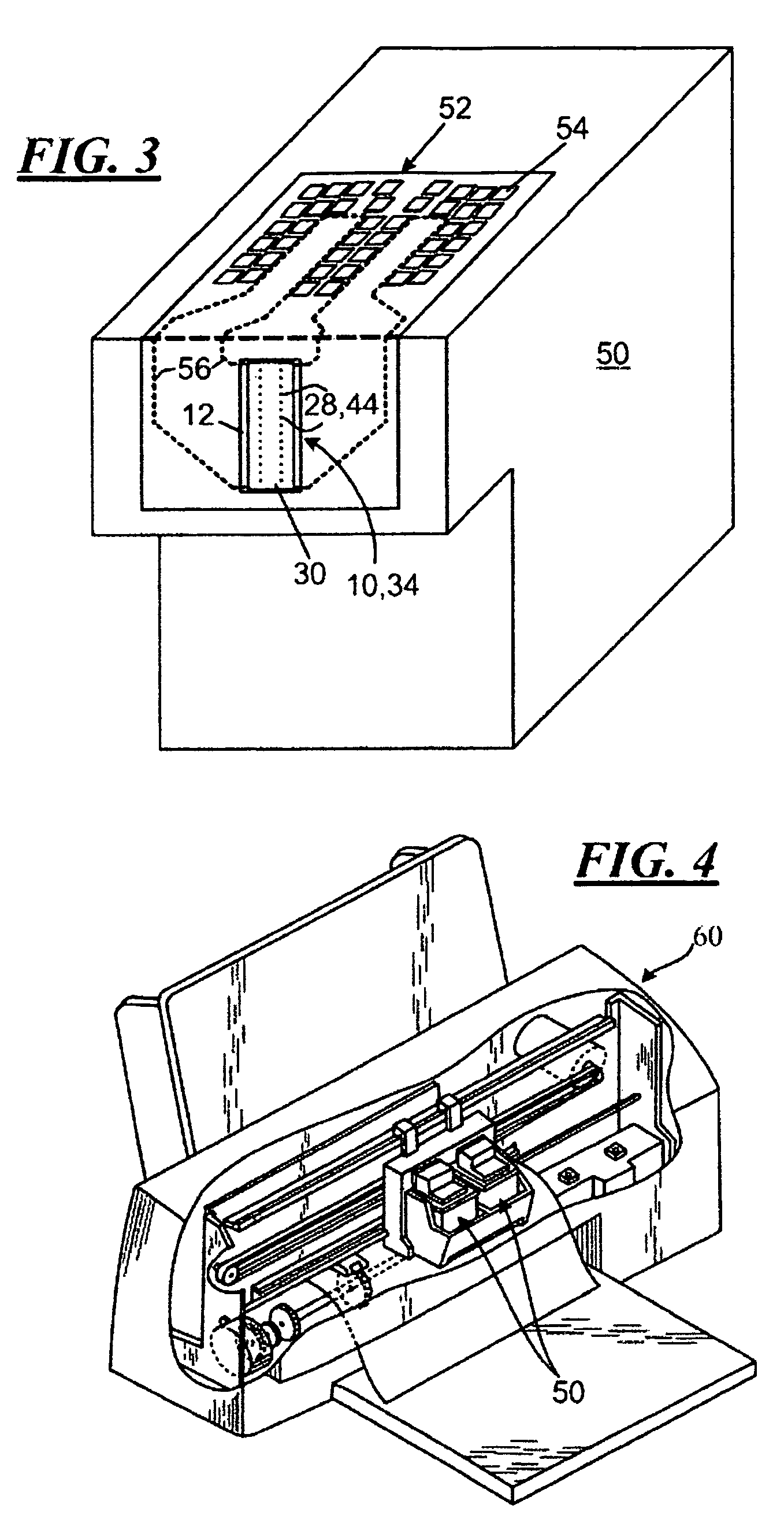Photoimageable dry film formulation
a technology of dry film and photoimage, which is applied in the field of improved photoimageable dry film formulations, can solve the problems of alignment problems, more expensive manufacture of micro-fluid ejection heads, and speed and quality not come without a price, so as to improve speed and quality, improve the quality of printers, and improve the effect of speed and quality
- Summary
- Abstract
- Description
- Claims
- Application Information
AI Technical Summary
Benefits of technology
Problems solved by technology
Method used
Image
Examples
example
[0054]By way of comparison, a photoresist layer was made with a prior art formulation and a formulation according to the disclosed embodiments. The formulations are set forth in the following table.
[0055]
TABLE 3Prior ArtInventiveIngredients in Cured Phototresist LayerFormulationformulationHigh Molecular Weight Phenoxy Resin40 wt. %40 wt. %First Di-functional Epoxy Resin30 wt. % 0 wt. %Multi-Functional Epoxy Resin 0 wt. %30 wt. %Second Di-Functional Epoxy Resin30 wt. %30 wt. %
Properties of photoresist layers, as determined by dynamic mechanical analysis, made with the products of the prior art formulation and the inventive formulation are set forth in the following table.
[0056]
TABLE 4Prior ArtInventiveProperties of Photoresist layerFormulationformulationGlass transition temperature Tan Delta peak115166(° C.)Cross-link density (mmol / cc) at 10° C. +2.039.6Tan DeltaCross-link density (mmol / cc) at 30° C. +1.218.9Tan DeltaElastic modulus at 1176° C. (MPa)6.72147.90Elastic modulus at 196° ...
PUM
| Property | Measurement | Unit |
|---|---|---|
| thickness | aaaaa | aaaaa |
| thickness | aaaaa | aaaaa |
| thickness | aaaaa | aaaaa |
Abstract
Description
Claims
Application Information
 Login to View More
Login to View More - R&D
- Intellectual Property
- Life Sciences
- Materials
- Tech Scout
- Unparalleled Data Quality
- Higher Quality Content
- 60% Fewer Hallucinations
Browse by: Latest US Patents, China's latest patents, Technical Efficacy Thesaurus, Application Domain, Technology Topic, Popular Technical Reports.
© 2025 PatSnap. All rights reserved.Legal|Privacy policy|Modern Slavery Act Transparency Statement|Sitemap|About US| Contact US: help@patsnap.com



